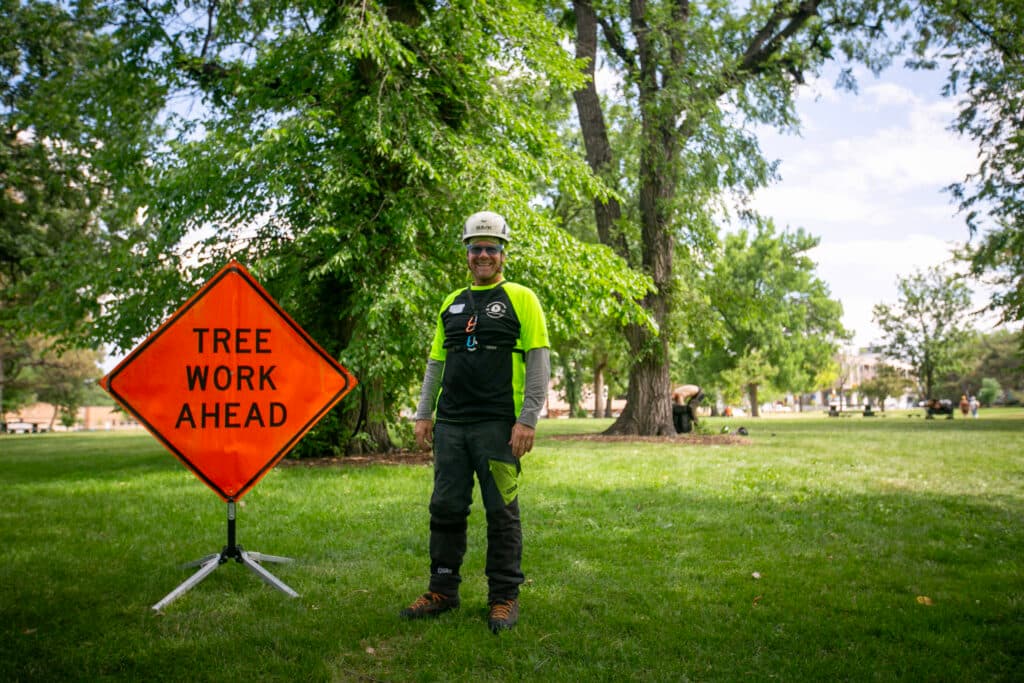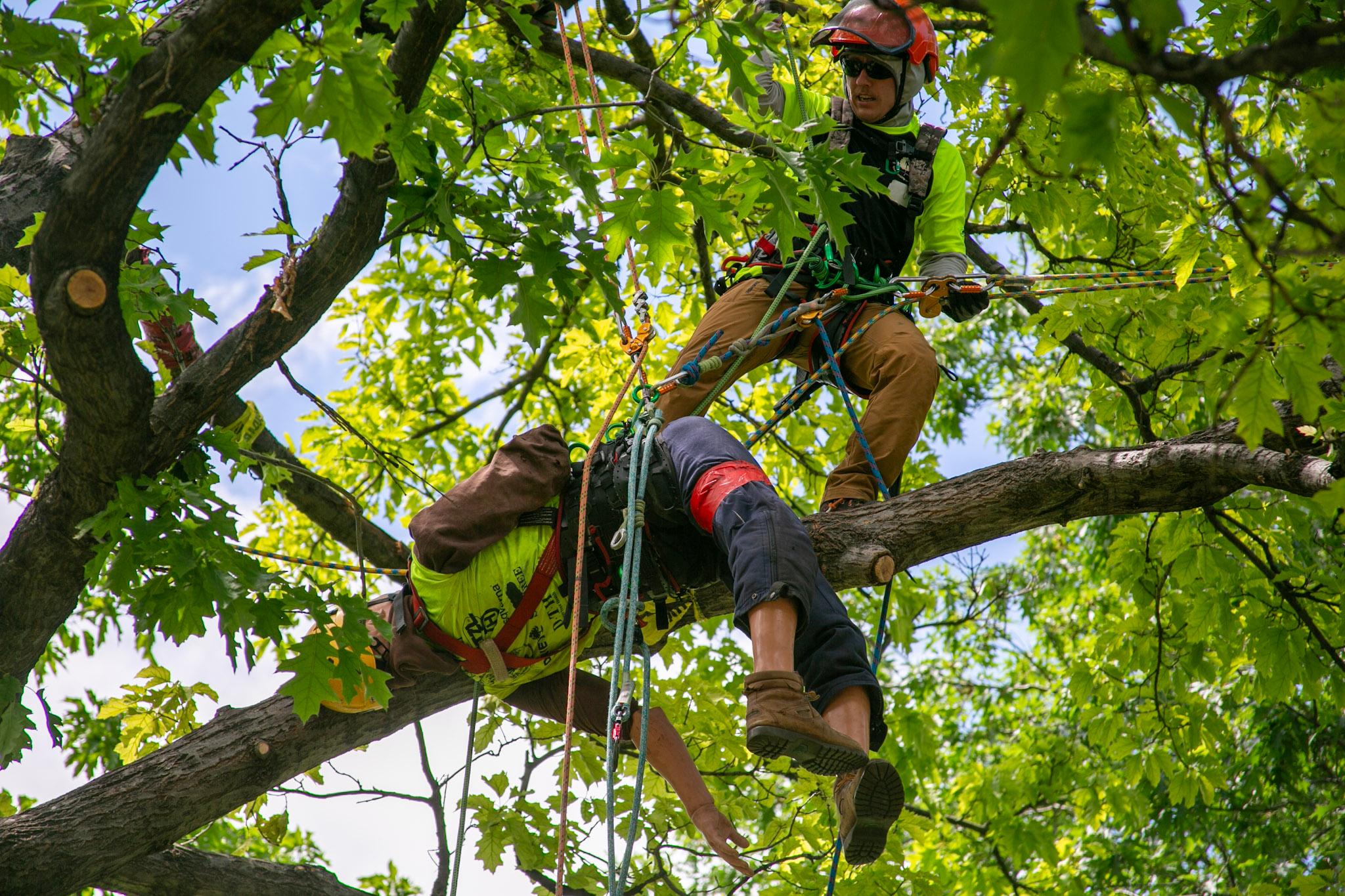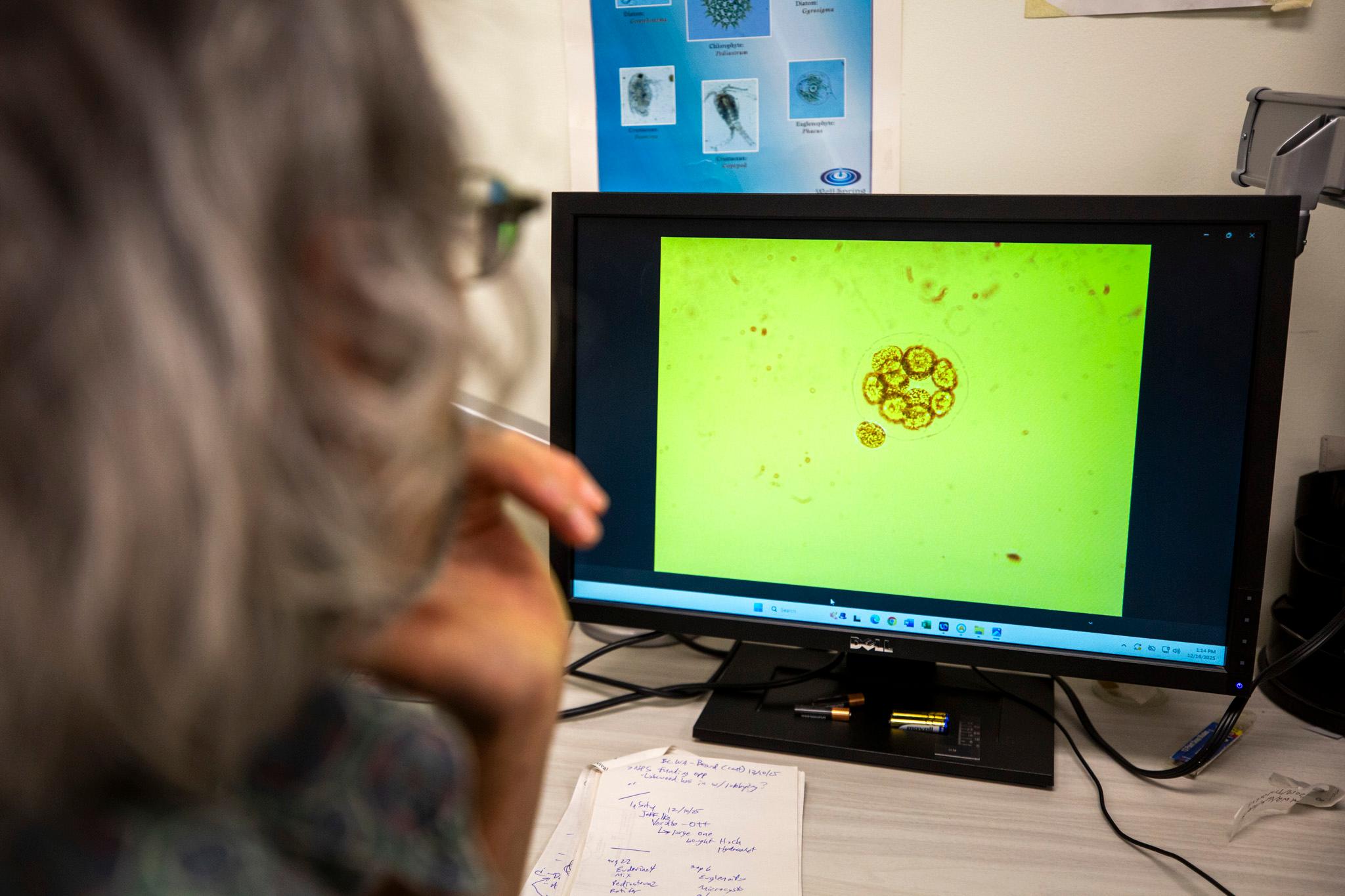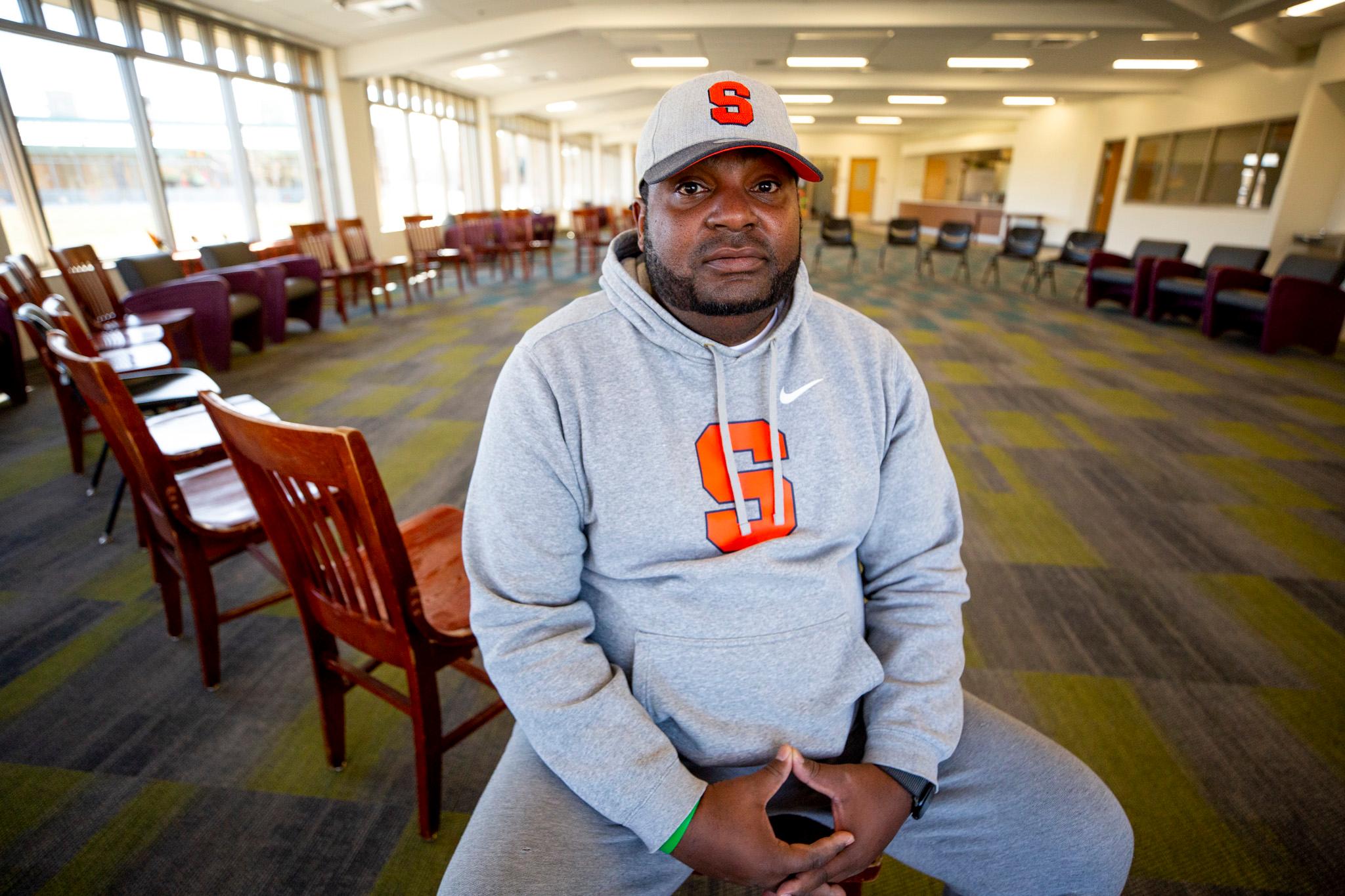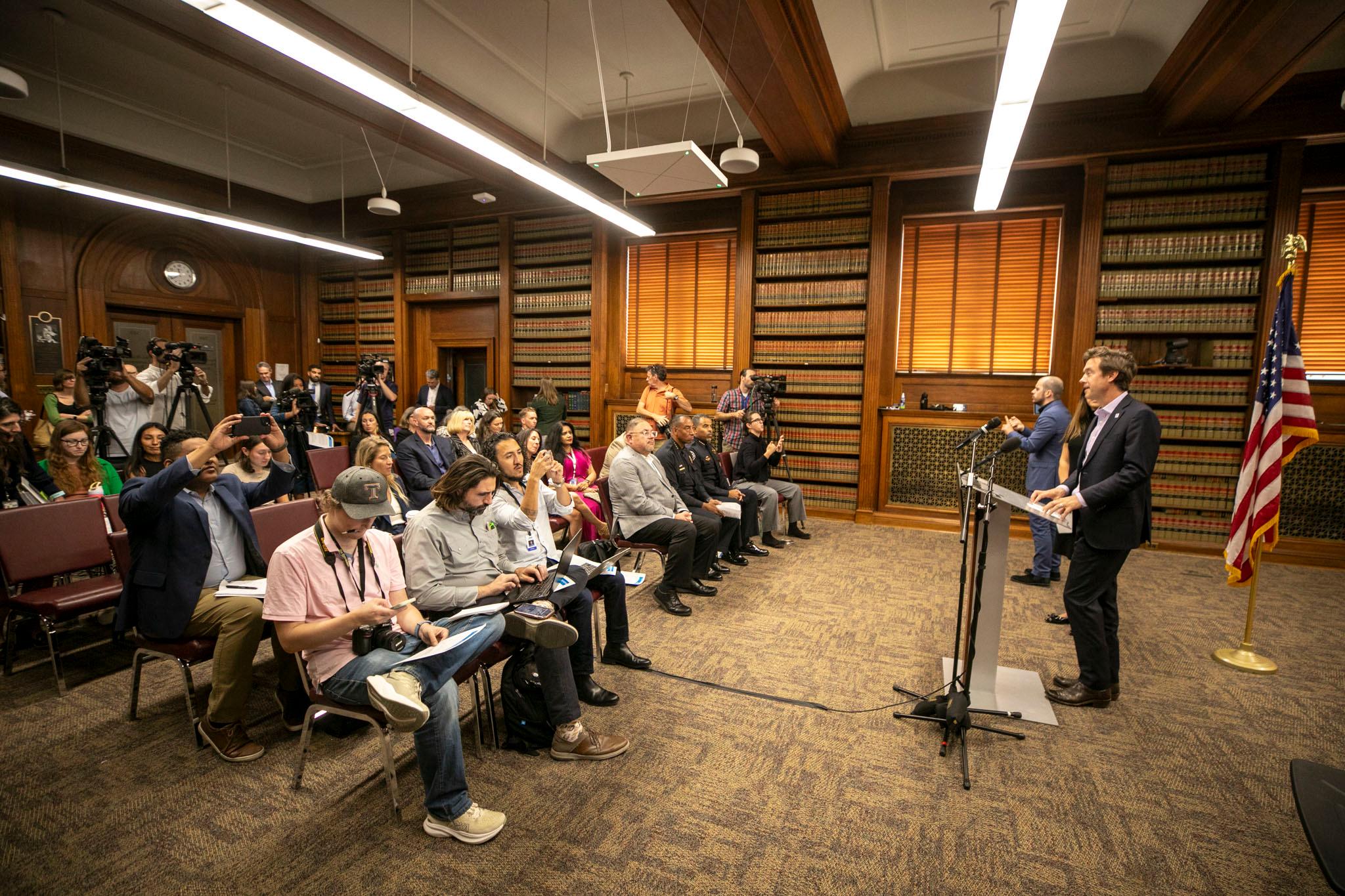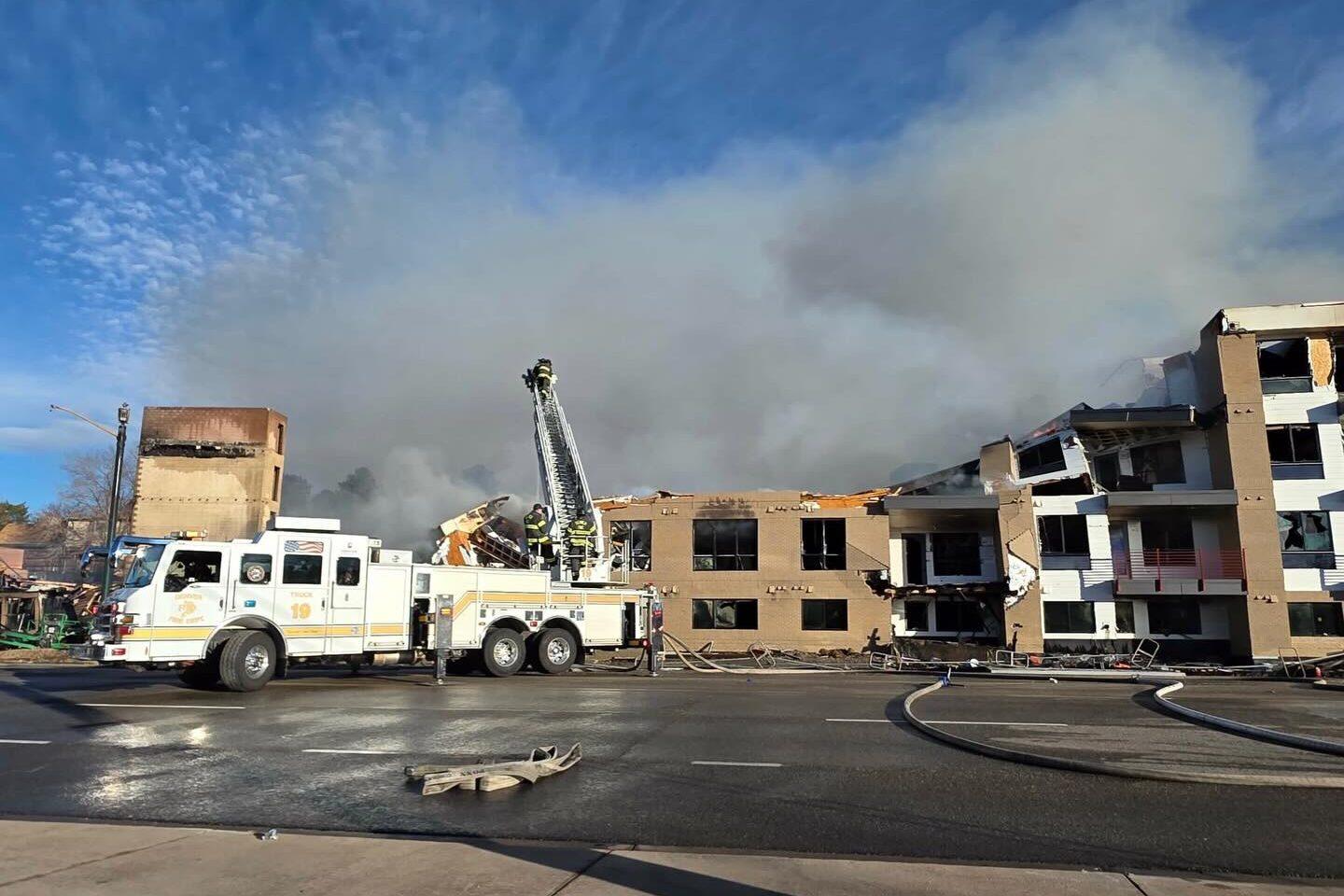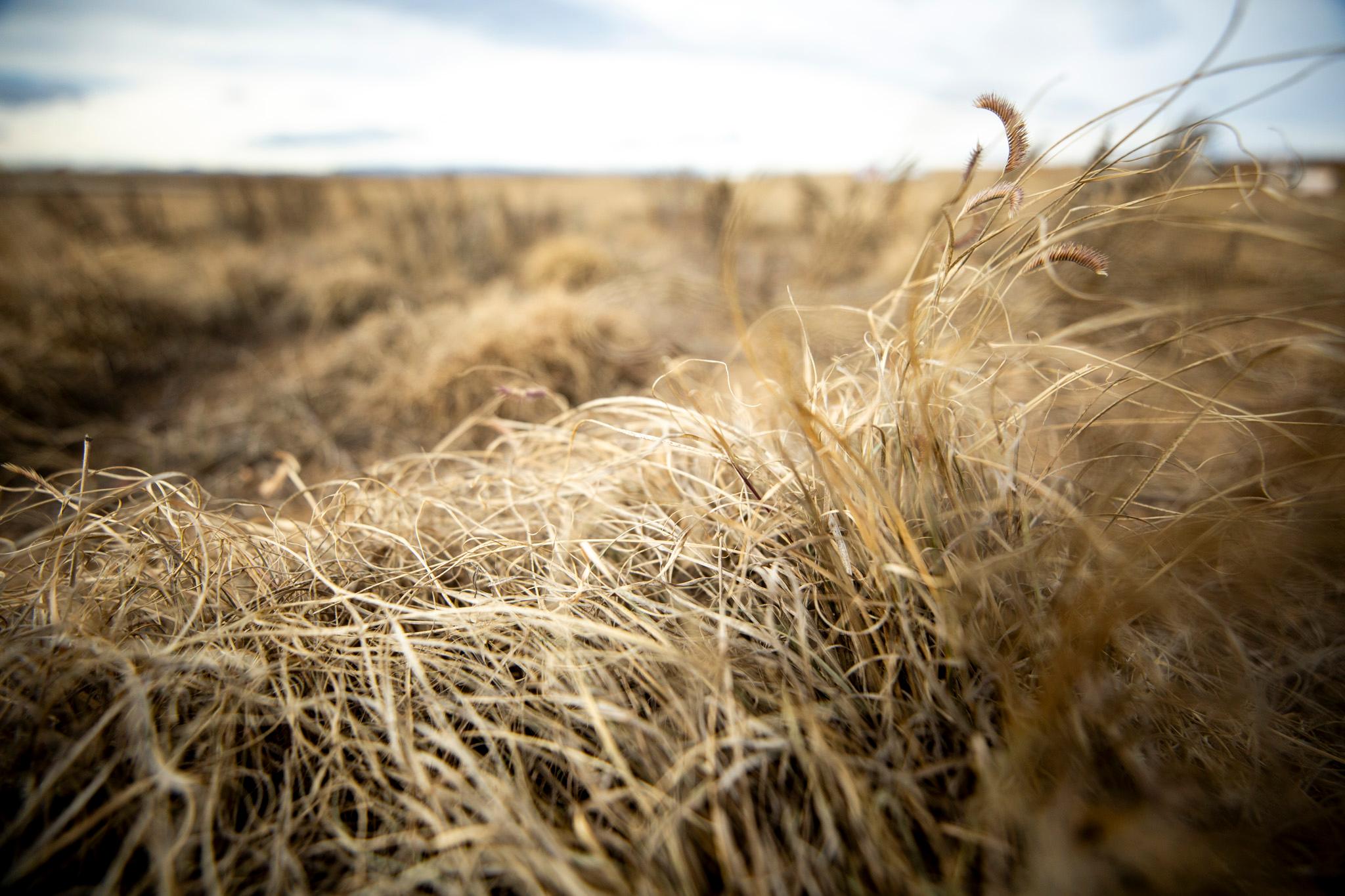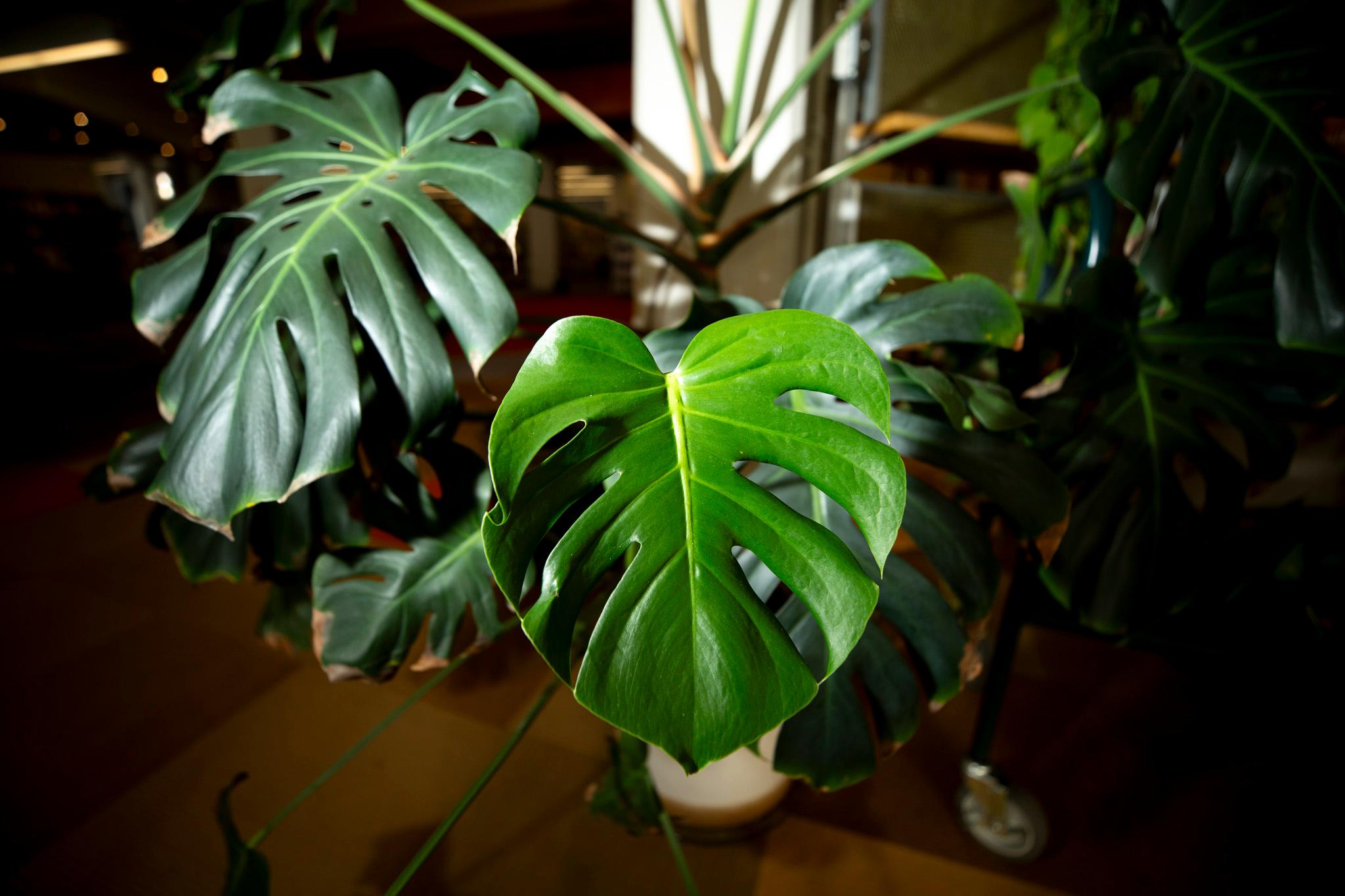“ARE YOU OK?” Edward Cruise yelled toward the canopy of a Gambel oak tree in Berkeley Lake Park.
“Ethan, how are you doing? I think you broke your arm,” he shouted. “I'm coming to get you!”
“Ethan” was a 180-pound humanoid dummy — and he would need to be rescued 44 times throughout the weekend. The park was the site of a tree-climbing competition hosted Friday and Saturday for dozens of arborists.
Each competitor chose their own name for the dummy, but they had the same goal: get it down from a roughly 50-foot tree in under five minutes without violating safety protocol.
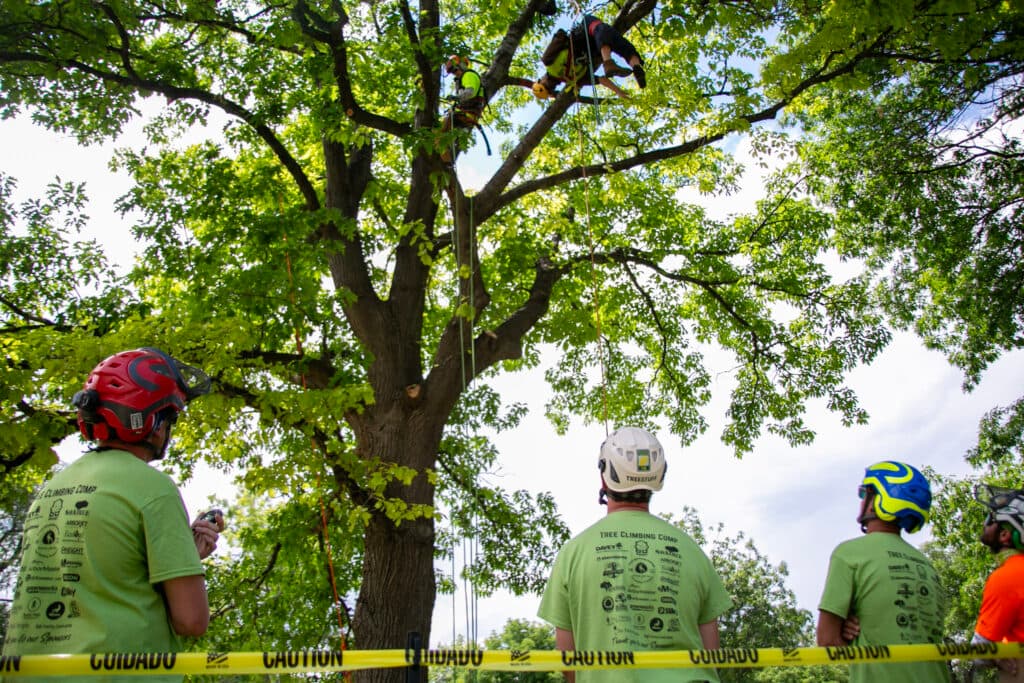
There was a lot on the line: The event, hosted by the Rocky Mountain chapter of the International Society of Arboriculture, was a qualifier for an international competition. One winner from the men's competition and one winner from the women’s competition would get an all-expenses-paid trip to the International Tree Climbing Championship in New Zealand this fall.
The Rocky Mountain chapter is one of 56 chapters and affiliate organizations worldwide, 21 of which are located in the United States.
So … they save “Ethan.” What else?
This year, 37 men and seven women competed in the Rocky Mountain chapter competition. All of them are professional arborists, spending their workdays climbing and caring for trees.
On Friday and Saturday, Berkeley Lake Park was abuzz with professional climbers and spectators alike.
Between tall trees roped off with caution tape sat folks in folding chairs, enjoying picnics, petting dogs, and cheering for their loved ones. Often flanking the caution tape were contestants, clad in vibrant neon-and-black T-shirts, cheering for their comrades.
Throughout Friday and Saturday morning, each of the 44 competitors cycled through five events, climbing trees between 50 and 60 feet tall in the preliminary rounds.
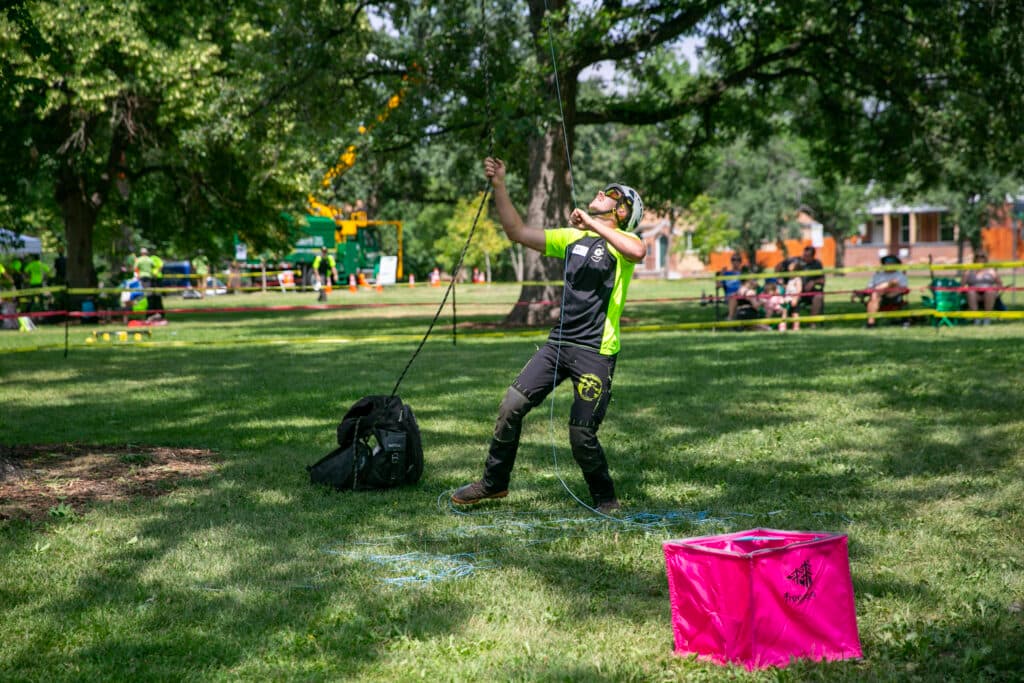
For some events, like the belayed speed climb, scoring was straightforward.
“They're going to go as fast as they can and ring a bell at the top. It's that simple,” said Sherry Fairow, an ISA-certified arborist and volunteer head judge for this year’s Rocky Mountain chapter competition.
Others were more nuanced. The “work climb” tests competitors’ ability to move about the tree and complete tasks at various stations, like sawing or filling a bucket on a pulley.
Judges, who are well-versed in an extensive rulebook, score competitors on safety, style, and speed.
“Anything that would be deemed unsafe is immediately a disqualification,” said Kelley Apodaca, executive director of the ISA Rocky Mountain Chapter.”
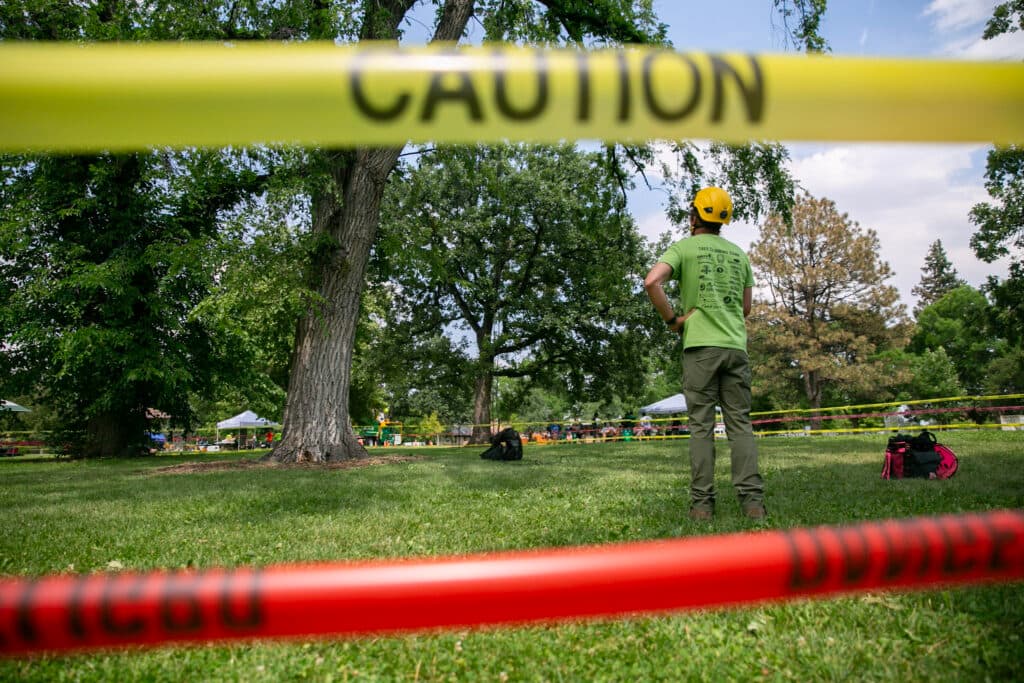
“This is a test of how beastly you can be.”
The top competitors in the preliminary rounds moved onto a masters’ competition on Saturday afternoon.
Ashley Fox, one of the finalists, has made it to the masters’ challenge four times. Last year, she won and went on to compete in the international competition in Savannah, Ga.
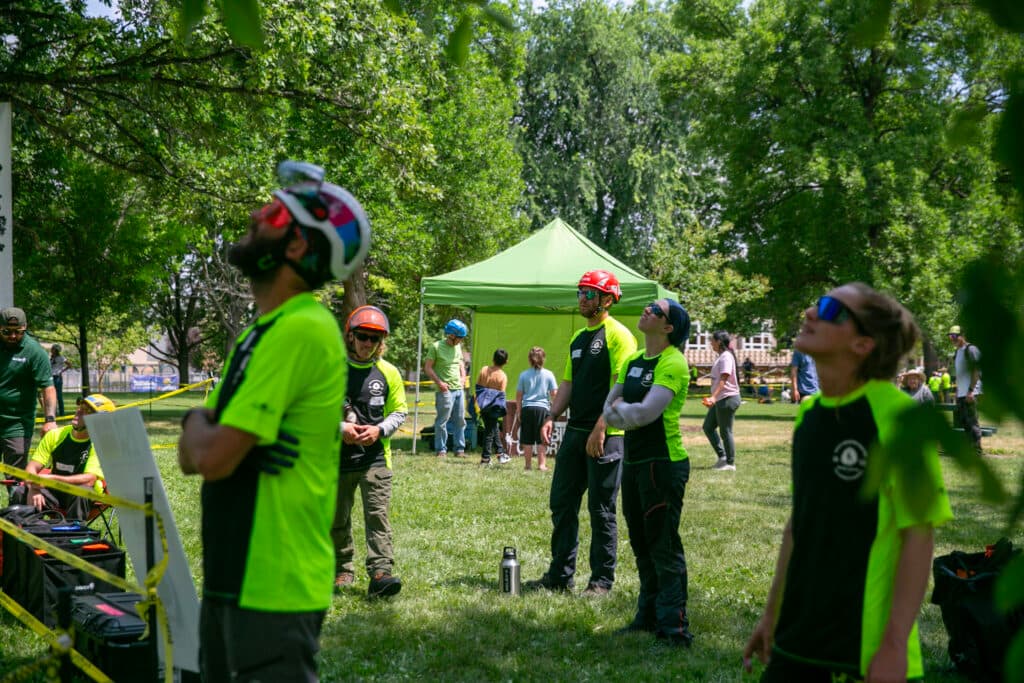
The master competitors were asked to tackle a significantly taller tree.
“We've seen the tree just from afar,” she said on Saturday. “It's pretty tall, so I’m nervous. The preliminaries are the fun part, and then you get to this part and it's a lot harder.”
The final challenge is a fusion of all of the preliminary events, minus the aerial rescue, combined into one “beastly” climb.
It’s a test, Fox said: “How quickly can I get into the tree and start working? How quickly can I get my rope set so that I can work? How efficiently and safely can I move throughout the tree?”
Patrick O’Meara has never qualified for the masters’, but he loves watching those who do.
“It's so neat for us to be able to see what they do and how they do it,” he said, “because it's taking what we do and bringing it up, elevating it to an art form, and it's so impressive.”
After the finalists braved the massive tree — navigating all sorts of obstacles, including a beehive — the winners were announced: one from the men’s competition and one from the women’s.
Axel Avila will represent the Rocky Mountain Chapter at the ITCC, and Ashley Fox will represent the women.
“I love tree climbing competitions, probably because of the people,” Fox said. “Everybody's rooting for each other. Everybody's open with their tricks and helping others. So that's my favorite part about it.”
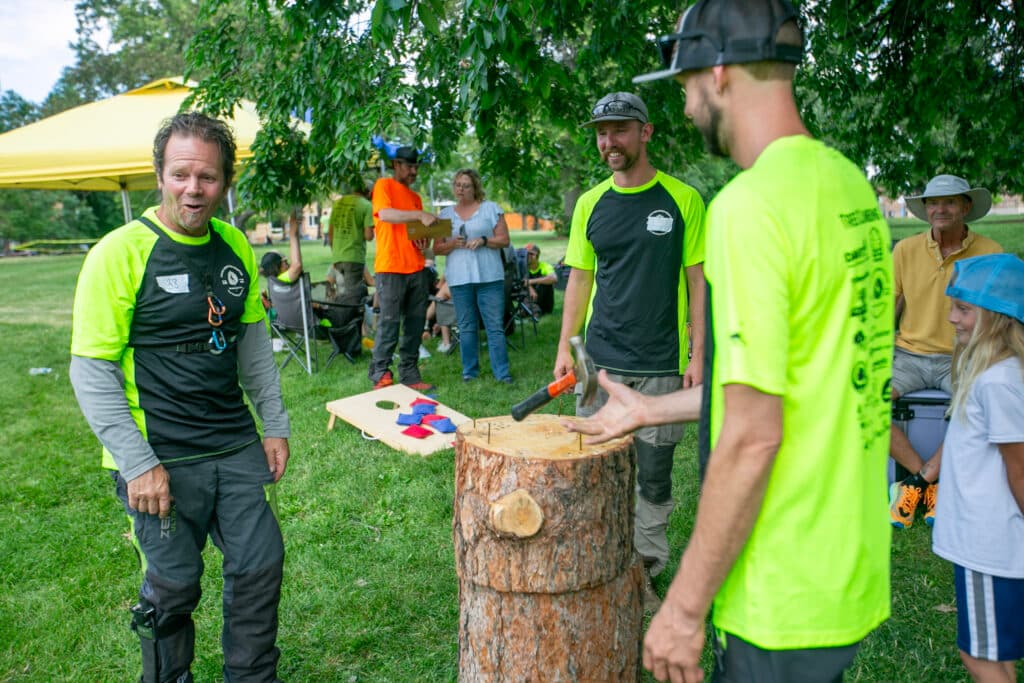
From Fortune 500, to Misfortune 500, and back again
This was the 14th time Patrick O’Meara joined the competition. Though he’s never qualified for the masters’ competition, he loves the community event. And he loves the profession.
“I can be a 55-year-old little boy who climbs trees for a living,” he said.
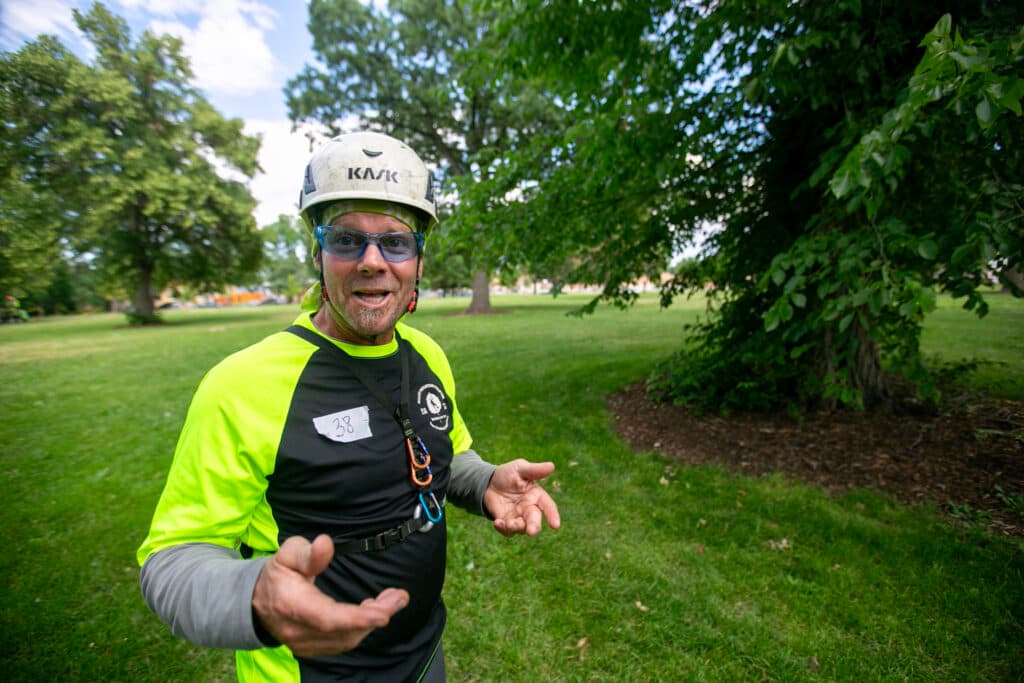
But in 2021, a recreational tree climb went wrong.
“I had a really weird accident that dropped me from 40 feet,” he said. “Broke both my legs, broke my arm over my knee, my right foot was over here somewhere, chest damage. It was bad.”
So bad, he needed multiple surgeries and used a wheelchair for six weeks. But during his stay at the hospital, a gift arrived. It was a multi-colored climbing rope.
The sender’s message was, “‘This rope is to show you that you're going to come back’,” O’Meara said, “and it was so heartening.”
“We have a wonderful community. Lots of love — lots of love — lots of gratitude, lots of payback,” he said.
The close-knit community gave him hope that he would make a full recovery and return to tree-climbing.
And, with the help of his family, friends, and community, he did.
“You go out, and then you walk again, and then you climb again, and then you smile again,” he said, teary-eyed.
